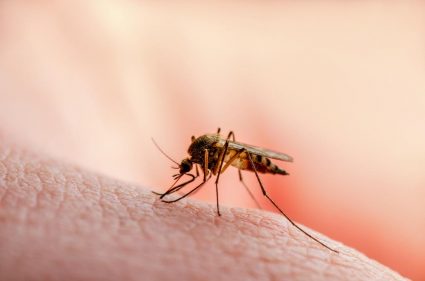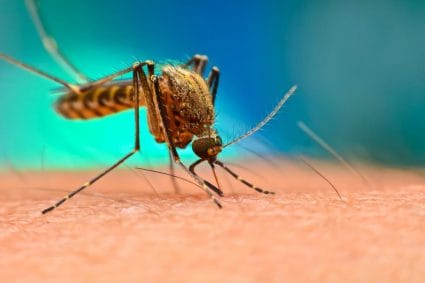
Living in an area with skunks can be a challenging experience due to their notorious defensive spray. While these creatures play a crucial role in controlling pests, their presence close to your home can be unpleasant. If you’re struggling with a skunk problem, making a spray-proof skunk trap can be an effective solution. Here’s a comprehensive guide on how to create a spray-proof skunk trap, ensuring a humane and safe method to control these critters.
To make a spray-proof skunk trap, you’ll need a 6″ diameter PVC pipe or a heavy-duty plastic tube, a solid steel door, heavy-duty steel components for the trap mechanism, and bait. Cut a piece of plywood to fit inside the tube as a floor, attach the triggering system and door, then bait the trap. Place the trap in an area where you’ve noticed skunk activity, and monitor it regularly. Approach any trapped skunks cautiously, and cover the trap with a tarp or blanket to minimize the risk of getting sprayed. Always consult local regulations before trapping and relocating skunks.
Understanding Skunks and Their Behavior
Before delving into the construction of the trap, understanding skunk behavior can be beneficial. Skunks are nocturnal creatures, typically active from dusk to dawn. They are omnivores, feeding on insects, grubs, small rodents, fruits, and even garbage. Skunks are known for their defensive spray, which they release when threatened. This spray has a strong, unpleasant odor and can cause temporary blindness if it reaches the eyes.
Materials Required for a Spray-Proof Skunk Trap
To build a spray-proof skunk trap, you will need:
- A 6″ diameter PVC pipe or a heavy-duty plastic tube, about 24″ long
- A solid steel door
- Heavy-duty steel components for the trap mechanism
- Bait (eggs, crispy bacon, cat food, chicken or turkey, canned tuna or sardines, peanut butter on bread, marshmallows)
Constructing the Spray-Proof Skunk Trap
Follow these steps to construct a spray-proof skunk trap:
- Cut the plywood: Cut a piece of 1/4″ plywood to 5″ x 24″ to be used as a raised floor with bait on it.
- Assemble the trap: Attach the plywood floor to the inside of the concrete form tube. Ensure that the tube is long enough to prevent the skunk from raising its tail and spraying.
- Install the triggering system and door: The triggering system should hold the door open until the skunk enters the trap. Once the skunk is inside, the door should close, trapping the skunk inside the tube.
- Bait the trap: Place bait on the raised plywood floor inside the trap. Skunks are attracted to foods such as eggs, crispy bacon, cat food, chicken or turkey, canned tuna or sardines, peanut butter on bread, and marshmallows.
- Set the trap: Place the trap in an area where you have noticed skunk activity. Make sure the trap is stable and secure.
- Monitor the trap: Check the trap regularly to see if a skunk has been caught. If a skunk is caught, approach the trap cautiously and cover it with a tarp or blanket to minimize the risk of getting sprayed.
Safety Measures
While building and setting up a spray-proof skunk trap, consider these safety measures:
- Wear protective gear: Use quality leather or canvas gloves when handling the trap to protect your hands from scratches and reduce the risk of infection due to exposure to feces or urine.
- Cover the trap: To minimize the risk of getting sprayed, cover the trap with a canvas tarp or a blanket. This will help keep the skunk calm and prevent it from seeing you as you approach the trap.
- Approach the trap cautiously: When approaching the trapped skunk, move slowly and calmly. Skunks are more likely to spray when they feel threatened.
Legal Considerations
Before trapping and relocating skunks, consult your local game and wildlife department for any specific regulations or requirements. In some areas, you may require written permission or have specific guidelines for releasing trapped animals.
Skunks play a vital role in our ecosystem, and it’s crucial to handle them humanely and responsibly. By creating a spray-proof skunk trap, you can effectively manage skunks in your area without causing harm to the animal or yourself. Remember, if you’re unsure about the process, it’s always best to consult with a professional.
Frequently Asked Questions
What is the best time to set the skunk trap?
The best time to set the skunk trap is before dusk since skunks are nocturnal creatures and are most active from dusk to dawn.
Can I use any other materials to make the skunk trap?
Yes, you can use other materials as long as they are sturdy enough to withstand a skunk’s strength and prevent it from escaping. The key is to ensure the skunk cannot raise its tail to spray once inside the trap.
How often should I check the trap?
It’s best to check the trap at least once a day, preferably in the morning. Checking the trap regularly ensures that if a skunk is caught, it can be relocated as quickly as possible, reducing stress on the animal.
What should I do if the skunk sprays inside the trap?
If a skunk sprays inside the trap, it’s recommended to wait for the spray to dissipate before handling the trap. The spray can cause temporary blindness and a strong, unpleasant odor.
Can I use this trap for other animals too?
Yes, this trap can be used for other small to medium-sized animals. However, the bait and the size of the trap might need to be adjusted according to the animal you are trying to catch. Always check local laws and regulations before trapping any wildlife.










